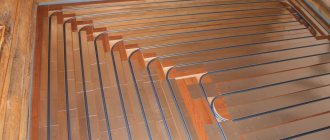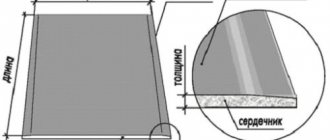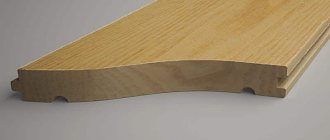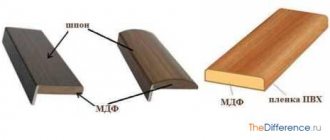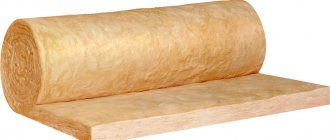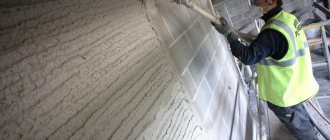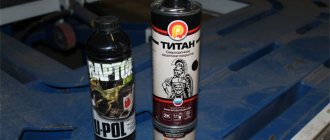Has the old bathtub long ago lost its former shine, and in some places is covered with microcracks or worn out? Are you tired of such an old bath? What to do, replace it with a new one or restore the old one?
Let's figure it out together.
Replacing an old bathtub will be quite expensive. A smart move would be to replace the entire bathroom during a renovation, but this is a very long process.
And what is the right thing to do when you urgently need a bath, but you don’t want to spend a lot of money. There is always a way out; we recommend covering the bathtub with enamel or acrylic.
Enameling is the application of a thin layer of enamel to a previously prepared bathtub surface. Currently, alternatives to enamel coating are acrylic liners or a pour-in bath made of impact-resistant, heat-resistant acrylic. What is better to choose? This article will help you decide.
What do you need to cover a bathtub with acrylic or enamel?
Flute brush, suitable only for natural bristles, 90 mm. To make sure you have enough, we recommend purchasing 2 pieces, in case one falls or gets dirty with something greasy.
You should not touch the bristles of the brush to avoid grease getting on it, this can cause the paint to peel off in the future.
Flute brush for applying enamel
Durex and drill bit. Durex, otherwise called a Durex wheel, is a grinding wheel with a rubber or plastic base. This all fits under the drill chuck along with the shank.
Durex drill bit
Paint knife or tweezers. These items are needed to remove hairs that have come out of the brush. In any case, hairs will fall out of a new brush, and one that has already been used should never be used.
Supplies you will need are the following:
Acetone, approximate volume 0.5 l. or solvent No. 646. It is best not to use mineral spirits or other solvents with a saturated hydrocarbon base.
Enamel solvent
You will also need rags that will not leave lint, such as flannel, cotton and the like. Microfiber cloths, which are usually used to wipe glasses, work well.
You will need about 5-7 of these napkins, but they are not cheap, so the best option is rags, which are best washed before use.
Caring for acrylic bathtub surfaces
Caring for an acrylic surface includes several simple rules:
- after use, it should be wiped with a dry cloth;
- Under no circumstances should you use abrasive cleaning products;
- It is not advisable to place metal basins and other heavy objects inside the bathtub;
- You should not take a bath using salts and cosmetics with a high content of dyes;
- Do not soak clothes with bleach in it;
- It is necessary to ensure that no aggressive chemicals come into contact with the acrylic coating.
What you need to know when painting a bathtub yourself
Quite often you can find many different warnings. If you have some skills in painting and know safety precautions when working with aggressive substances, then you will be able to do everything on your own.
Well, if you have experience in repairing a boat or yacht, then the technology for restoring a bathtub is exactly the same.
It is necessary to stock up on protective equipment, necessary tools and accessories. In addition, having the skill of simple plumbing work will be welcome.
Let's look at some of the protective equipment.
- Season. Any painting work should be carried out in well-ventilated areas, with windows wide open. And for everyone at home, the best option would be to leave home for a week. Therefore, it is better to carry out such work in the summer.
- A respirator is required. To paint a bathtub, you need not just a “petal”, but a specialized respirator that will have an organic absorber cartridge, MZ. A civilian or military gas mask is perfect.
- Rubber gloves, rubberized or oilcloth apron. Household gloves made of latex are also suitable for use, but they must be double-layered. White inside, yellow outside, but it's worth stocking up on at least two or three pairs.
Also interesting: Review of materials for making bathtubs
In order to choose the best option for you, we will consider all the options in more detail. Before starting the restoration, you need to prepare the bathroom.
Substances that are used to renew bathtubs, as a rule, contain aggressive components that are characterized by volatile properties. It is better, before starting restoration, to remove everything from the room except the bathtub and earthenware.
The washing machine must be well packed in plastic film, all cracks in the packaging must be sealed with tape. The shower hose can be removed, and the nickel taps also need to be protected.
Pros and cons of enamel
Some manufacturers coat their bathtubs with enamel, since this method is considered the most reliable and durable. Pros of enamel:
- efficiency,
- wear resistance,
- quick application,
- resistance to chemical cleaning agents.
The main disadvantage of this method is the pungent odor. Workers use special respiratory protection when enameling. The enamel takes a long time to dry, so you won’t be able to use the bathroom for about a week. Another disadvantage is high thermal conductivity, so the water in such a bath cools quickly.
The first option is enamel
There are several options for treating a bathtub with enamel. This is applied by brush and spray method. If you can apply the enamel with a brush yourself, then for processing using method 2 you will have to contact special companies.
The enameling steps are the same in both options:
- Mechanical treatment of the bath. Cleaning the inner surface of the bathtub from old enamel using cleaning powder and an abrasive stone. I wash everything off with water.
- Degreasing the surface. Next, you need to clean off the rust and all irregularities and thoroughly degrease the surface.
- Removing degreaser. The best way to do this is to fill the bathtub with hot water and let it sit for 10 minutes. After time, drain the water and wipe dry with a lint-free cloth. After preparation, the bath will be dry, smooth and slightly matte.
- Applying a base coat of enamel, otherwise known as primer. After applying the working composition of hardener and enamel, it is allowed to dry thoroughly.
- Applying the second layer of enamel. After the first layer has dried, apply the second and also wait until it dries completely. The whole job takes about 3-4 hours. It is recommended to add 12-15 ml of dibutyl phthalate to each portion of the mixture, and mix the solution thoroughly.
Positive sides
- In order to cover the bathtub with enamel, no installation work is required.
- Enameling is one of the most economical options for bathtub restoration. • You can enamel the bathtub an unlimited number of times.
Negative sides
- The durability of the coating is about 5 years on average.
- Compared to acrylic, it does not retain heat well, so the water cools quickly. • After treatment, traces of deep cracks may remain visible.
- After applying the final layer, you will have to wait 3-4 days until all layers are completely dry.
Preparing the surface for applying liquid acrylic
Before applying the material, it is necessary to carry out preparatory work and dismantle the outdated coating. The sequence of actions will be as follows:
- Sand the scratched enamel with sandpaper. If the scratches are too deep, then you will have to use a drill with an abrasive wheel to polish the plumbing product.
Advice. Since sanding a bathtub entails a huge amount of dust, it is strongly recommended to acquire a protective mask when performing work.
- Next, you need to wash off the dirt and degrease the surface. You can use household soda with hot water;
- If there are any small cracks left, they can be leveled using auto putty;
- Before filling the bath with liquid acrylic, it is recommended to heat it. To do this, pre-fill the container with hot water for a few minutes. Then dry with a lint-free cloth;
- It is then important to remove both drain holes so that the acrylic does not leak into the utilities. To do this, just place some dishes or seal the hole with construction tape.
The second option is a self-fill bath
This method is considered the youngest. Relatively recently, bathtubs began to be treated with liquid acrylic, otherwise called stacrylic or poured bathtub. A distinctive feature is the method of application, not with a brush, like enamel, but by pouring it along the sides.
Acrylic, flowing down the walls, will fill all the cracks. The stages of applying liquid acrylic are, in principle, the same as when processing with enamel, that is, stripping, degreasing and applying the solution.
Also interesting: Bathroom restoration: methods of painting at home
When applying the solution, care must be taken to ensure that no bubbles form. If a bubble appears and does not disappear within 2 minutes, it must be broken through with a brush. You can also apply another layer if desired.
Positive sides
- Retains heat well and is shock-resistant.
- Due to the application of a thicker layer than with enameling, the surface becomes smoother.
- Long service life, about 15 years.
Negative sides
- It takes a long time to dry, about 5 days.
- If you leave a faucet over the bathtub and a drop drips from it, a trace of it will remain, the best option would be to turn off the water.
Features of liquid acrylic
Among the key features of the new technology, the possibility of independent restoration also stands out. At the same time, it takes not days, but hours to restore the former beauty of a plumbing product. The coating application method is also different. The procedure is carried out without the participation of traditional brushes. The liquid material is poured into the container along the sides. This helps to naturally fill any defects and cracks. Therefore, after a few hours, the restored product looks like completely new.
This amazing coating has good performance properties, among which are the following:
- The uniformly smooth surface is characterized by resistance to external influences;
- Due to the increase in strength characteristics, the shelf life of the product increases;
- Easy care is ensured by a regular sponge and household soap;
- Low thermal conductivity distinguishes acrylic material from an enameled surface. Heat retention can significantly improve the comfort of being in the bathroom;
- Drying of the material takes about 1-2 days.
Attention! While the acrylic is drying, it is advisable not to disturb it. It is necessary to turn off the water.
Liquid acrylic has excellent performance properties
In this case, the liquid material can be applied in a thick layer to any non-standard surface. And this guarantees owners up to 15 years of trouble-free service.
The third option is an acrylic liner
According to its technical characteristics, acrylic is a universal material. It is easy to clean, durable, heat-resistant, and rust from old pipes will not eat into the surface.
Acrylic liner for restoration of an old bathtub
Inserts are made to order and can be of any shape and color. To make it, an acrylic sheet is heated and a matrix of the required size is blown. The manufactured liner is inserted into the old bathtub.
Before installing the liner, the bathtub must be sanded to a rough state and dried thoroughly. Next, you need to measure the location of the overflow and drain holes and drill holes for them in the liner.
Using special glue or polyurethane foam, the liner is attached to the bathtub and for a tight attachment, it is filled with water for a while. It is important that the glue is applied in a thin layer to both surfaces. On average, the work takes about 2 hours, and the service life of such a liner is 20 years.
Custom order acrylic liner
It is better to entrust the installation of the liner to specialists. It will not be cheap, but a high-quality installed liner will serve you for many years, because it is not made of the cheapest materials.
Positive sides
- The qualities of metal and acrylic bathtubs are combined.
- It will not darken with use and will not absorb rust and dirt.
- Can be washed with regular soap or special soap. means for acrylic, but not abrasive.
- Resistant to cracks and impacts. Minor scratches will disappear after polishing.
- Has antibacterial properties.
- It is heat-resistant, the water in such a bath takes longer to cool than in an enameled one.
- Quick installation but long service life.
Negative sides
- Suitable for standard bathtub shapes.
- Related work is required, such as cutting tiles, to put the liner on the bathtub.
Installation of an acrylic liner by a specialist
Installing an acrylic insert – what do you need to know?
When selecting a liner, first take measurements of the bath: external and internal length, in two places internal width and depth five centimeters from the drain.
The acrylic liner is installed on the sides of the bathtub, so first one row of tiles or edging is removed with a hammer and chisel.
Preparing the surface of the bathtub for installation of the insert is carried out in almost the same way as for covering the bathtub with acrylic: the factory coating is sanded, the surface of the bathtub is degreased, and the plumbing is dismantled.
The insert is set according to size. Holes are cut in it for drainage and overflow. Then polyurethane foam is evenly applied to the entire surface of the bath. The area where the drain-overflow will be installed is treated with silicone sealant. This procedure is performed to prevent water from getting between the walls of the insert and the bathtub.
Then, pressing with your hands, install the liner, tapping with a rubber mallet over the entire surface of the liner.
After installing the insert, the drain and overflow are installed. After this, cold water is drawn into the bath, which under its weight creates uniform pressure and presses the liner onto the walls and bottom until the polyurethane foam hardens.
To ensure tightness around the perimeter, a plastic or acrylic corner or tile border is glued along the wall. Water treatments can be taken 12 hours after installing the acrylic liner.
Streaks and sagging
In cases with epoxy enamel and liquid acrylic, drips or sagging may form. Therefore, it is worth monitoring these coatings, when enameling after 15 minutes, and when covering with acrylic after 5 minutes.
It is very easy to remove drips; you need to smear them with a brush in an upward motion. The sagging is cut off after drying with a mounting or painting knife. Sometimes it is necessary to install new cuffs or gaskets in the drain trims, because the drain holes become narrower and the thickness of the walls increases.
In conclusion, we can say that in appearance, the acrylic liner has the advantage. But, in terms of practicality, if it is installed in a steel bathtub, it will last 2 times less than the required period.
Therefore, when restoring a steel bathtub, it is better to choose enamel or liquid acrylic. This method of updating a bathtub will cost you several times less.
Cons of acrylic coating
This material also has some disadvantages:
- The filling technology must be followed very strictly. If even one point is violated, it can lead to rapid damage to the surface. Also, the pouring process itself presents certain difficulties for an inexperienced person in the construction business.
- Some types of acrylic in a liquid state can be poisonous , as a result of which safety precautions must be observed very strictly.
- If the bathroom has very large damage or it is necessary to close the hole, it will be impossible to level it all with acrylic without prior restoration.
- The poured layer takes quite a long time to dry. You can use the bathroom only after 2-4 days.
- If the acrylic coating was applied incorrectly, it will be very difficult to remove.
Now about the process of finishing the bathroom walls
First you need to putty the walls. Modern soft putties allow even a beginner to learn this if you have the desire and patience. You can also entrust this part of the work to repairmen. But, I assure you, it’s not scary to try it yourself either. Dilute the finishing putty in a container. Using two spatulas, begin applying the putty to the primed wall.
It is better to choose a primer special for bathrooms and antifungal.
When the putty is dry, take the sanding mesh and grout brush and scrub the surface to level it. Then you need to repeat the putty process again in those places where there are dents and irregularities. Wait until it dries again and repeat the sanding procedure. The result should be a fairly flat and smooth surface.
The type of painting I'm describing doesn't require a perfectly smooth surface, but make sure the wall looks fairly even. If necessary, in areas that are more lit and visible, go a little further with a small rubber spatula.
Flaws
- Relative fragility - damaged by a strong blow.
- The need for a frame is for stability.
- Ban on boiling water - possible deformation of the body.
- Cleaning problems - does not tolerate powders or alcohol-containing detergents.
- High price.
- Fragility – a weighty object can pierce through the bowl.
- Inhomogeneous layer - scratches can be cleaned out, but this has to be done constantly.
- For installation, you need a frame and fixation to the wall - if it tips over, the bathtub can flood the neighbors or break through the sewer system.
- Boiling water restrictions.
- Rapid loss of appearance.
ABS/PMMA
- Acrylic peels off from plastic.
- The bathtub is leaking where the drain is inserted.
- Repair is difficult.
- You need to attach the board to the wall.
- Small resource – 10-15 years.
- Deformed.
- Loses decorativeness.
- Restoration is expensive.
Quaryl
- High cost - at least 25 thousand rubles.
- A small selection - the only Villeroy&Boch brand.
- Not suitable for budget bathrooms.
- Expensive restoration of the decorative layer.
Acrylic for bathrooms is called “plumbing”, and its composition includes substances that prevent the growth of bacteria. Styrene has a negative effect on the body and causes poisoning. We strongly recommend that you check with sales consultants about its presence/absence in the structure.
Care and operation. The material addresses the question of what an acrylic bathtub is. Pros and cons, customer reviews and design solutions are presented on the pages of the article. In addition, here you will find the following information:
- acrylic as a bath material;
- advantages and disadvantages;
- comparison with cast iron and steel products;
- reviews of popular models.
Common customer reviews
Owners of acrylic bathtubs often leave reviews online on various resources and share their impressions with their acquaintances and friends. Moreover, among them there are both satisfied and disappointed with the purchase.
The first category of users is of interest to potential buyers precisely because of the mention of a model that has proven itself worthy during operation. It’s especially gratifying when several people spoke positively about the option they liked.
The second category is more interesting - it is negative reviews that allow you to get to know more closely the problem areas of a particular manufacturer’s bathtub. Thus, users targeting cheap products are interested in the stability of the front layer. More precisely, the speed of its abrasion.
It is no longer a secret that cheaper versions of acrylic bowls are made from plastic, which is covered with a reinforcing layer on the bottom and a 2 or 3 mm layer of acrylic on top. Moreover, in some Chinese products its thickness can be 0.5 mm.
A high-quality product will have only 2 layers - reinforcement on the bottom, and acrylic on top about 5 mm or thicker. You need to check this personally by looking at the cut
When studying reviews, you need to be careful - often competitors pay for negativity towards bona fide companies.
Therefore, if on a thematic forum someone furiously argues that all acrylic bathtubs are bad, except for products from an unknown company, then such interlocutors cannot be trusted.
Some owners say that bathing in a polymer container is akin to bathing in a plastic basin. This feeling occurs when the frame is insufficiently rigid or improperly installed.
Acrylic - what kind of material is it?
An acrylic bathtub is a composite product with a layered structure made from acrylic resins. The part that comes into contact with water and skin is transparent plastic. The color is given to it by a special powder that is included in liquid polymethyl methacrylate even before the polymerization stage. Acrylic for bathrooms is called “plumbing”, and its composition includes substances that prevent the growth of bacteria. Main properties:
- plasticity - under the influence of heat, the material changes;
- durability – protection against fading;
- low porosity - dirt and bacteria do not linger on the walls of the bathtub;
- simplified restoration - defects are masked using homemade artisanal methods.
Physical characteristics of acrylic
In the production of bathtubs, sheets of two materials are used, differing in thickness and manufacturing method:
- “Pure acrylic” (cast). The compound (polymer resin) is poured into a sealed mold between the glasses and polymerized in a steam oven. This substance is hard and wear-resistant.
- Double layer plastic. It is made by combining melts of cast acrylic and acrylonitrile butadiene styrene (ABS).
The structure of the acrylic bathtub has two surfaces. On the one hand it is impact-resistant, on the other it is glossy and smooth.
Plumbing fixtures are made from “pure” acrylic after going through four mandatory operations:
- Forming - heating the sheet and stretching it to the size of the workpiece;
- Reinforcement – coating the back side of acrylic with a composite layer;
- Trimming – removing excess plastic;
- Assembly - installation of the workpiece on the load frame and polishing it.
There is a separate type of two-component sheet. Plus: cheap. Disadvantage: worse quality - the required hardness of the coating is missing, the design may be unreliable. When choosing an acrylic bathtub, make sure that the thickness of the polymer used is less than 5-6 mm. The higher this indicator, the more durable and durable the model.
Effect on the human body
Among the manufacturing methods, there is a method in which styrene is added to the raw material (necessary for reinforcement). The material is inexpensive, but contains toxic substances that evaporate over time and accumulate in the human body. Warm water enhances the richness of the vapor.
Styrene has a negative effect on the body and causes poisoning. We strongly recommend that you check with sales consultants about its presence/absence in the structure.
Most coatings for acrylic bathtubs are eco-friendly and hygienic. The smoothness of the walls ensures that bacteria and microorganisms are effectively washed away - they do not have time to multiply.
Advantages over cast iron and steel
When installing a bathroom, many people ask this question: which bath is better - steel, cast iron or acrylic? It is impossible to answer this question right away, because you need to take into account a number of features of each product. So, let's consider what is better - a cast-iron bathtub or one with an acrylic coating. As for cast-iron products, they have an attractive appearance due to the excellent enamel. In addition, the surface of such bathtubs is not scratched, and they can be cared for using a regular detergent. To produce cast iron bathtubs, the casting method is used, as a result of which such a product is heavy. But the presence of high strength indicators allows you to maintain the shape of the container under high loads. Having high corrosion resistance, the service life of a cast iron bathtub will be more than 50 years. The video talks about the advantages of acrylic bathtubs over steel ones: If you compare cast iron and a steel bathtub, then the steel one in this case has a great advantage, since it has less weight, but the cast iron one is capable of retain thermal energy for a long time. When comparing cast iron and acrylic, we can say that acrylic takes an advantageous position in terms of strength, because it is characterized by elasticity, but cast iron is considered a less fragile material, since it can be damaged upon impact. For a more qualitative analysis, it is worth considering and comparing some of the advantages and disadvantages types of products presented. An acrylic bathtub is characterized by such qualities as plasticity, lightness, a wide range of shapes, durability and ease of removing scratches.
Cast iron bathtubs have screw legs, thanks to which you can adjust the height, and retain thermal energy perfectly. Steel products are light in weight and low in price.
Considering the presented advantages, we can say that acrylic is best in terms of weight, and cast iron can withstand high temperatures. Now let’s look at the disadvantages of the product. To make an acrylic bathtub, thin acrylic is used, which can spring underfoot. To clean such a product, you should not use abrasives. In this case, it is better to cope with contamination only with the help of liquid compositions. The disadvantages of cast iron bathtubs include their large weight. In addition, thin cast iron is used to produce such products, and its surface has pores into which dirt is constantly clogged. Steel products do not retain heat, cannot withstand mechanical influences, and a characteristic sound occurs when water is added. If we take into account the presented disadvantages of the presented types of bathtubs, then acrylic products win in terms of hygiene, and cast iron ones win in terms of strength. If you compare an acrylic and a steel bathtub, the cost of a steel bathtub is less, but it is easier to overcome scratches with an acrylic bathtub. The video shows the advantages of an acrylic bathtub over a cast iron one:
When purchasing a bathtub, you need to examine the sheet of plastic: if its thickness is 4 mm, the plumbing is of high quality. Corner symmetrical. The sides of this container are of equal length. It is installed in the corner of the room.
Types of acrylic bathtubs, materials and shape. An acrylic bathtub and its pros and cons are very different from sanitary ware made from materials such as cast iron and steel. The product can be of any shape and capacity. Bacteria, fungi and yeast do not accumulate on the surface of such a container; the plumbing fixtures are highly durable and cannot harm human health.
- 1 What is acrylic 1.1 Physical characteristics of the material
- 1.2 Effect on the human body
- 2 Types of acrylic bathtubs - materials and shape
- 3 Positive properties of an acrylic bathtub
- 4 Advantages over cast iron and steel
- 5 Disadvantages of acrylic coating 5.1 Similar
Preparing the paint
From a bucket of water-based paint for wet rooms, pour about 1/10 of the part for other color layers into a small container. (You can use a mayonnaise bucket.)
Add the color you choose to your liking to the bulk of the paint and mix well to obtain the desired color. This will be the main tone of the wall.
By the way, the advantage of this method is that it is not necessary to ensure a perfectly even layer of paint.
Using a roller and brush, cover the wall with paint. Wait for it to dry and prepare the next color.
If you need a darker shade and there is paint left from the first coat, you can add drops of color to the previous paint.
Tools and materials
The application technology is different, but for all cases you will need:
- roller with foam attachment, soft spatula (rubber);
- paint brush, sometimes a spray gun is used;
- grinder or grinder with a metal disc;
- drill with a whisk for mixing paint;
- containers for dilution, measuring cup, safety glasses, respirator, gloves, overalls.
You will need materials: sandpaper of different coarseness (No. 60 - No. 240), acetone-based solvent or alcohol, waterproof putty, paint, tinting pastes. Sometimes they sell ready-made kits with all the necessary preparations for mechanical cleaning and surface preparation.
Recommendations for using cast iron bathtubs
The renewed coating is treated with care and precision, the surface is protected from impacts, and abrasive agents and powders are not used for cleaning. For filling, use water whose temperature is not higher than +75°C, and also do not overload the bowl (children jumping, etc. are undesirable).
It is impossible to use aggressive acidic preparations for cleaning, and it is also undesirable to drain the remains of chemicals, chemicals and other caustic substances.
Remaining water near the drain hole is removed so that there are no red stains; for the same reason, leaks in the mixer are repaired in a timely manner.

